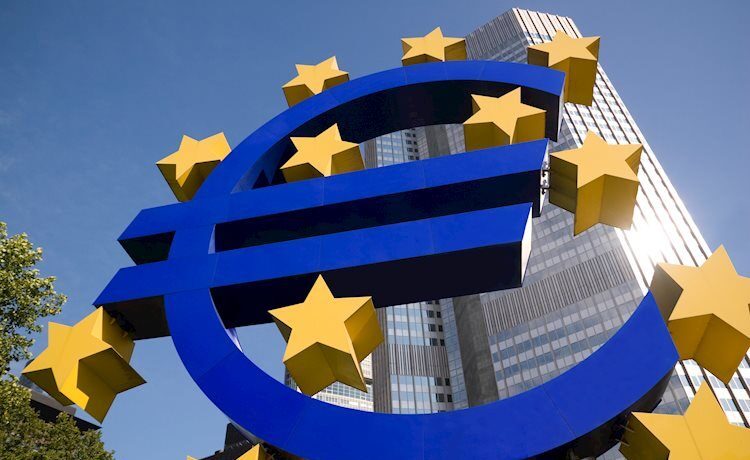- The Euro languishes at one-month lows amid broad-based Dollar strength.
- Dwindling hopes of Fed rate cuts and geopolitical tensions are underpinning support for the US Dollar.
- Later today the US Retail Sales and a slew of Fed speakers might boost EUR/USD volatility.
The Euro (EUR) is practically flat near one-month lows on Wednesday, consolidating losses after a sharp reversal on Tuesday. The increasing geopolitical tensions in the Middle East and central banker’s rhetoric have pushed back hopes of rate cuts in early 2024, sending investors rushing into safe assets like the US Dollar (USD), which is weighing on the Euro.
On Tuesday, the Federal Reserve (Fed) Governor, Christopher Waller, warned that the bank is unlikely to trim rates while consumer inflation remains at a “striking distance” of the 2% target of price stability. Waller echoed last week’s comments by other Fed policymakers, demonstrating that the market got ahead of itself with the global central banks’ easing expectations.
In this context, and with the increasing tensions in the Red Sea underpinning the safe-haven US Dollar, the focus is now on the US Calendar. Later today, December’s US Retail sales and an array of Fed speakers are likely to boost USD volatility.
Daily digest market movers: Euro succumbs on US Dollar strength as risk appetite falters
- The Euro is hovering near one-month lows against a stronger USD with all eyes on US consumption figures.
- Fed Governor, Christopher Waller struck a hawkish tone on Tuesday and cast further doubt about the possibility of a Fed rate cut in March.
- Futures markets are pricing a 63% chance that the Fed will start easing in March, down from 75% at the start of the week.
- In the Euro Area, final CPI figures for December confirmed that the headline inflation accelerated to a 2.9% yearly rate, from 2.4%, while the Core CPI eased to 3.4% from 3.6% in November.
- Later today US Retail sales are expected to show a 0.4% increase in December, following a 0.3% rise in the previous months.
- Shortly after the US data is released, Fed board members Michael Barr and Michelle Bowman are likely to give further insight into the bank’s monetary policy outlook.
- Somewhat later, European Central Bank President, Christine Lagarde, and Bundesbank Governor Joachim Nagel will speak. Their comments about the bank’s policy plans will be observed with interest.
- The uncertainty in the Red Sea persists, forcing shipping firms to find alternative routes for their cargo. This increases shipping costs and will translate into higher inflationary pressures.
- Data from China seen earlier today has added to evidence of the frail growth in the world’s second-largest economy. The third quarter GDP grew at 5.2% year on year, below the 5.3% expected, with retail sales also disappointing.
Technical Analysis: EUR/USD is under increasing bearish pressure below 1.0880 support
The EUR/USD has confirmed its near-term bearish trend with price action piercing the bottom of the last two week’s trading range, and the 38.2% retracement of the October – December rally, at 1.0880.
In so doing, the pair resumes its downtrend from late December highs, activating a bearish Head and Shoulders pattern. The next support levels are 1.0780 and 1.0725. The H&S measured target is 78.6% Fibonacci retracement of the aforementioned rally, at 1.0600.
On the upside, the pair should regain 1.0880 and the reverse trendline support, now at 1.0925 in order to shift its focus back to the 1.1000 area.
EUR/USD 4 Hour Chart

Euro price this week
The table below shows the percentage change of Euro (EUR) against listed major currencies this week. Euro was the weakest against the US Dollar.
| USD | EUR | GBP | CAD | AUD | JPY | NZD | CHF | |
| USD | 0.66% | 0.44% | 0.84% | 2.02% | 1.76% | 1.85% | 1.22% | |
| EUR | -0.67% | -0.21% | 0.18% | 1.37% | 1.10% | 1.20% | 0.56% | |
| GBP | -0.45% | 0.22% | 0.40% | 1.59% | 1.32% | 1.42% | 0.78% | |
| CAD | -0.84% | -0.19% | -0.38% | 1.19% | 0.93% | 1.02% | 0.40% | |
| AUD | -2.07% | -1.38% | -1.59% | -1.20% | -0.27% | -0.17% | -0.82% | |
| JPY | -1.79% | -1.13% | -1.46% | -0.94% | 0.27% | 0.10% | -0.55% | |
| NZD | -1.88% | -1.22% | -1.43% | -1.02% | 0.17% | -0.10% | -0.64% | |
| CHF | -1.26% | -0.57% | -0.78% | -0.39% | 0.82% | 0.54% | 0.63% |
The heat map shows percentage changes of major currencies against each other. The base currency is picked from the left column, while the quote currency is picked from the top row. For example, if you pick the Euro from the left column and move along the horizontal line to the Japanese Yen, the percentage change displayed in the box will represent EUR (base)/JPY (quote).
Interest rates FAQs
Interest rates are charged by financial institutions on loans to borrowers and are paid as interest to savers and depositors. They are influenced by base lending rates, which are set by central banks in response to changes in the economy. Central banks normally have a mandate to ensure price stability, which in most cases means targeting a core inflation rate of around 2%.
If inflation falls below target the central bank may cut base lending rates, with a view to stimulating lending and boosting the economy. If inflation rises substantially above 2% it normally results in the central bank raising base lending rates in an attempt to lower inflation.
Higher interest rates generally help strengthen a country’s currency as they make it a more attractive place for global investors to park their money.
Higher interest rates overall weigh on the price of Gold because they increase the opportunity cost of holding Gold instead of investing in an interest-bearing asset or placing cash in the bank.
If interest rates are high that usually pushes up the price of the US Dollar (USD), and since Gold is priced in Dollars, this has the effect of lowering the price of Gold.
The Fed funds rate is the overnight rate at which US banks lend to each other. It is the oft-quoted headline rate set by the Federal Reserve at its FOMC meetings. It is set as a range, for example 4.75%-5.00%, though the upper limit (in that case 5.00%) is the quoted figure.
Market expectations for future Fed funds rate are tracked by the CME FedWatch tool, which shapes how many financial markets behave in anticipation of future Federal Reserve monetary policy decisions.

















